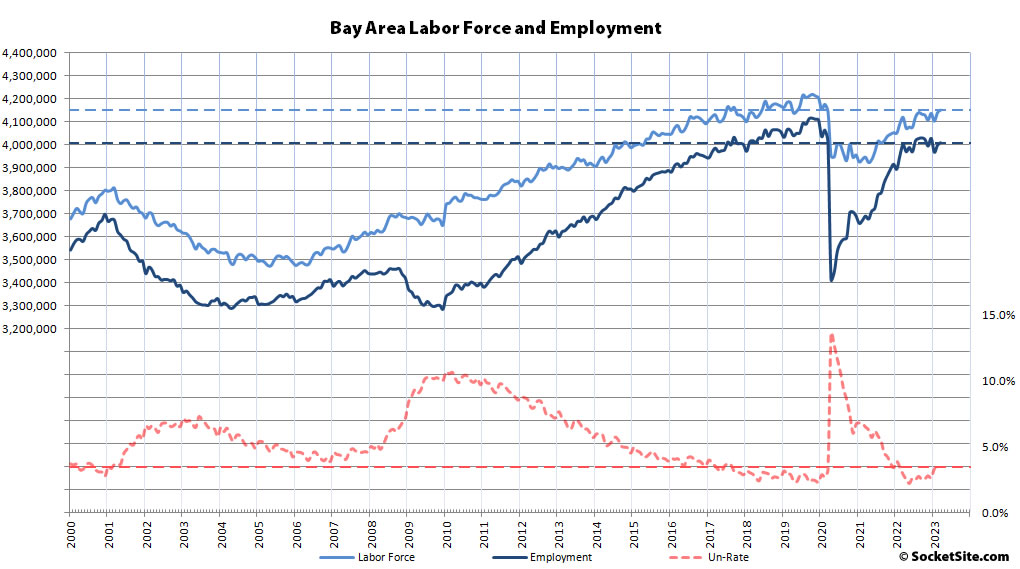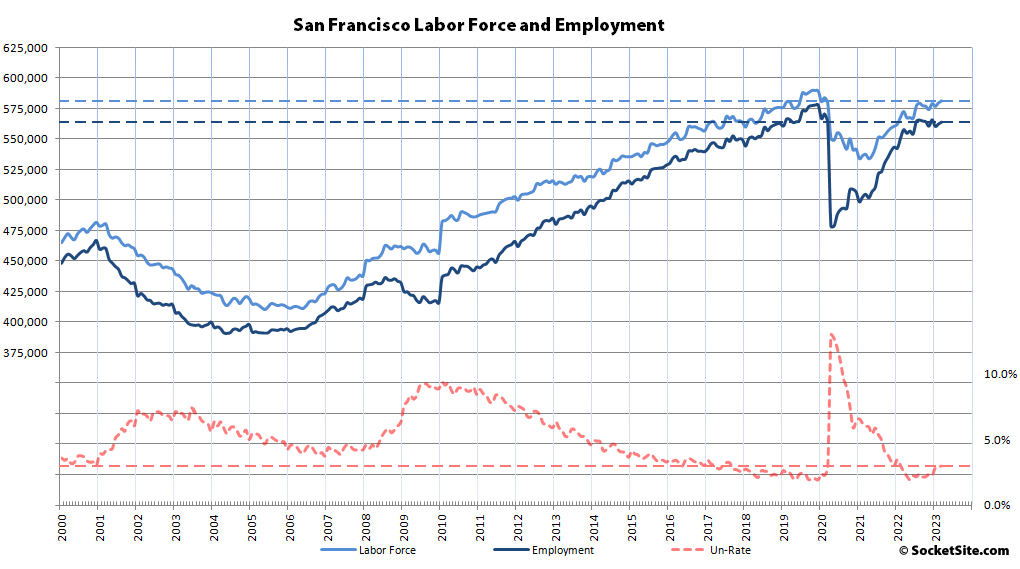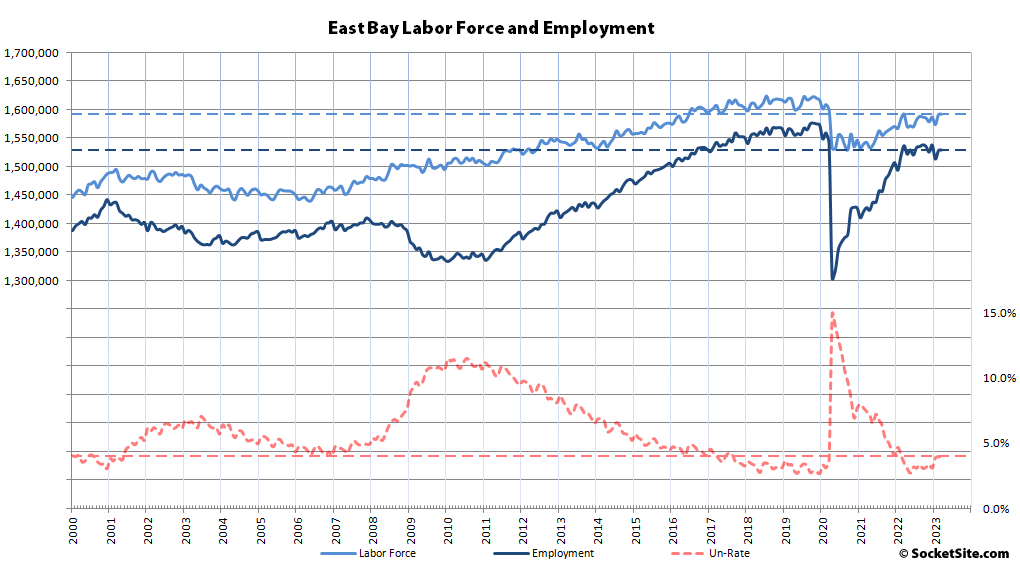Having dropped by 5,400 at the beginning of the year, the net number of people living in San Francisco with a job has since ticked back up by 3,500 to just over 564,000, with an unemployment rate of 3.0 percent, based on updated data from the State.
With the uptick in employment over the past two months, there are now 6,000 more employed residents in San Francisco than there were at the same time last year and 85,000 more employed than there were in April of 2020, when the pandemic-driven unemployment rate peaked at 13.0 percent, but still 6,700 fewer employed residents than there were prior to the pandemic, and 14,000 fewer than at the city’s peak at the end of 2019, with 2,600 fewer people in the labor force (581,300) as well.
Following suit, the number of employed East Bay residents, which had ticked down by 25,000 at the beginning of the year, has since ticked back up by 16,000 to 1,529,000, representing 63,000 more employed residents than at the same time last year, and 226,000 more employed than in April of 2020, but 30,000 fewer employed residents than prior to the pandemic with 17,000 fewer people in the labor force.
Having dropped by 26,000 at the beginning of this year, the number of employed residents spread across San Mateo and Santa Clara Counties has since ticked back up by 16,000 to 1,473,000, with a blended unemployment rate of 3.1 percent, which is back to within 5,000 people of its pre-pandemic peak, with nearly 8,000 more employed people in Silicon Valley than there were at the same time last year and nearly 18,000 more people in the local labor force.
Net employment across Marin, Napa and Sonoma counties increased by 6,000 over the past two months to 440,200, which more than offset its January decline, with nearly 16,000 more employed residents spread across the northern counties than there were at the same time last year but still 13,500 fewer than there were prior to the pandemic with 10,500 fewer people in the combined labor force (456,000).
As such, the net number of Bay Area residents with a job, which had dropped by 61,000 at the beginning of the year, has since ticked back up by 42,000 to just over 4 million, with an overall unemployment rate of 3.4 percent, representing 8,000 more employed residents than at the same time last year and nearly 600,000 more employed people since the second quarter of 2020, but with 55,000 fewer employed residents than there were prior to the pandemic; 100,000 fewer employed than at peak; a bit of seasonality back in play; a couple more mass layoffs, which have yet to hit the unemployment rolls, in the works; and the overall unemployment rate having inched up from 2.9 percent at the same time last year.



And now, for an opposing viewpoint. I’ve long since stopped trying to reconcile these two (often differing) “official” reports, insofar as they meaure slightly different things (status of employment by residence vs. site of employment) and the BA has porous borders. But hey…we’re free to choose either the good or bad news as we wish!